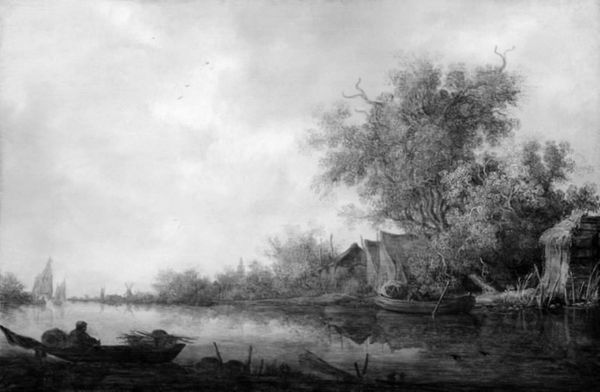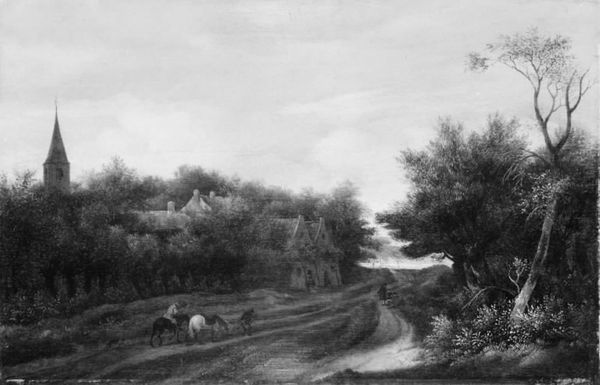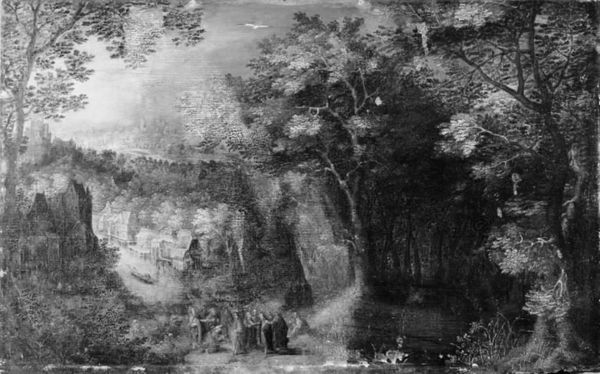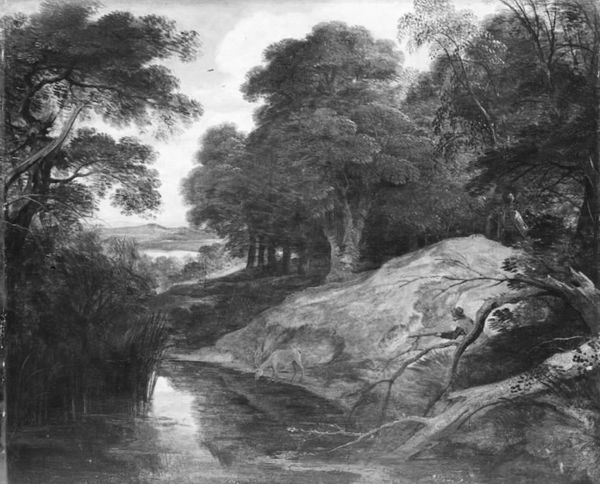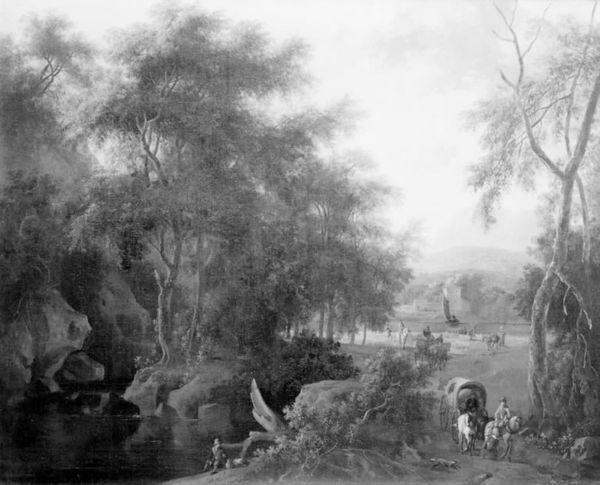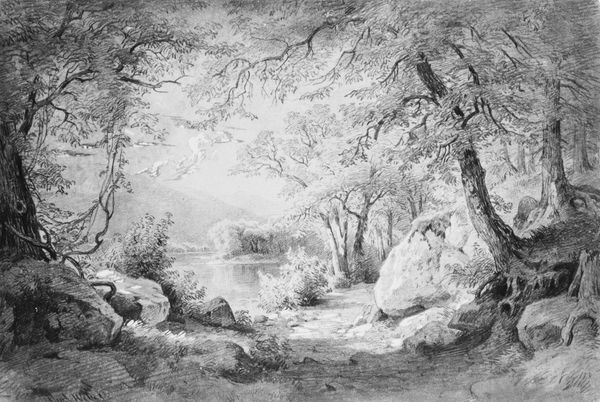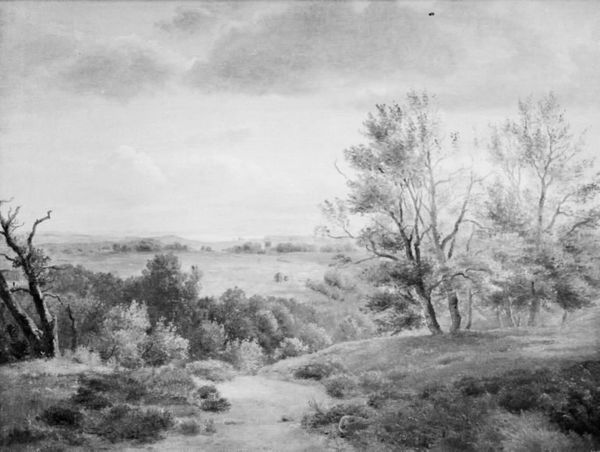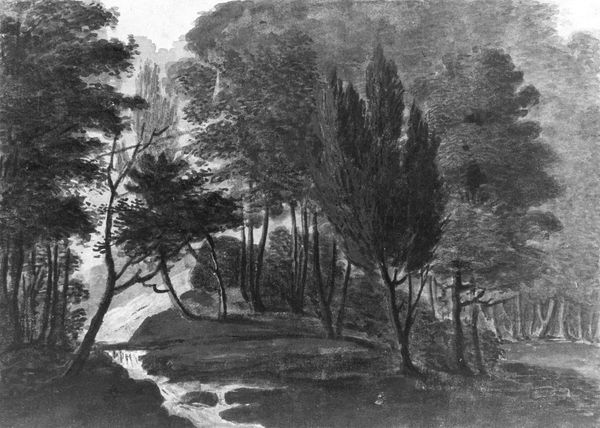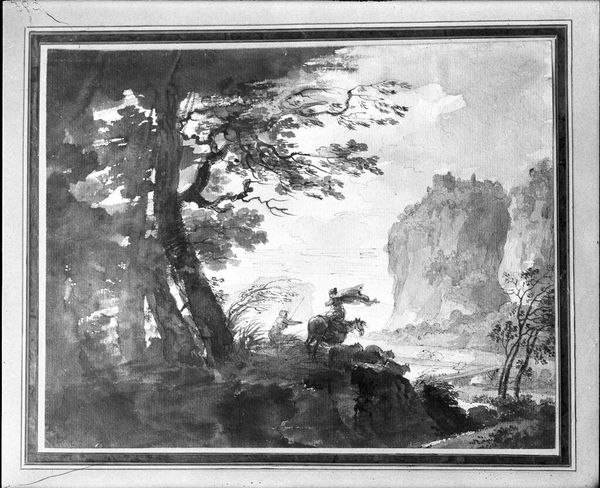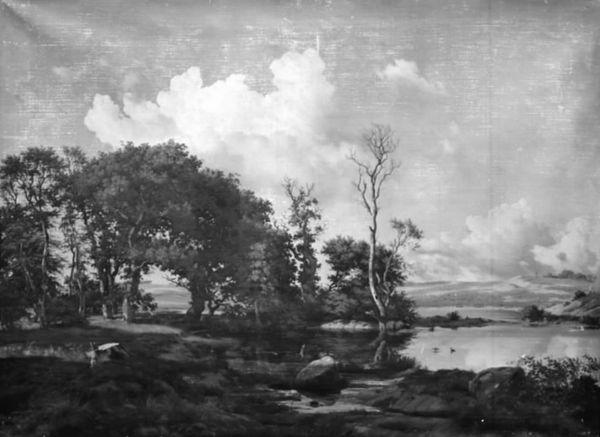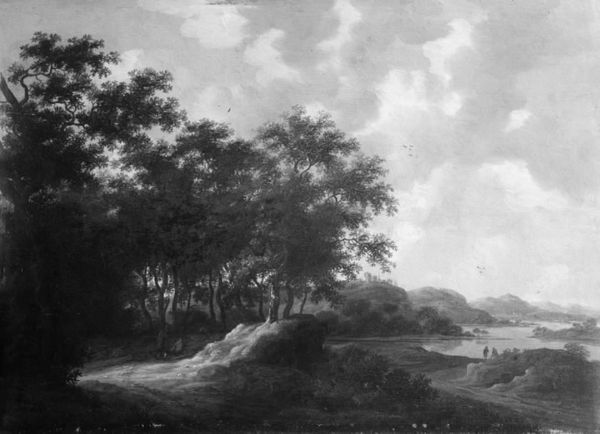
painting, oil-paint, canvas
#
baroque
#
painting
#
oil-paint
#
landscape
#
canvas
#
monochrome
#
realism
#
monochrome
Dimensions: 112 cm (height) x 140 cm (width) (Netto)
Curator: Right, let's take a look at this captivating "Landscape," an oil on canvas created by Isaac de Moucheron sometime between 1692 and 1744. It's currently part of the collection at the SMK, the Statens Museum for Kunst. Editor: Wow, instantly, I'm struck by how melancholic and almost dreamlike this scene feels, despite being in monochrome. The composition feels both intimate and expansive, like I'm peeking into someone's memory. Curator: It is quite evocative. De Moucheron, part of a family of artists, specialized in these idyllic landscapes, drawing heavily from the conventions of Baroque and Realist styles. These weren't meant as faithful records of specific places, but rather idealized versions of nature. Editor: Idealized indeed! There’s something about the starkness that throws me a bit. The absence of color really emphasizes the textures, like the rough bark of those foreground trees against the smooth, reflective water. Did he drain the color on purpose, I wonder, or is that how it's aged? Curator: That is an interesting question. My research shows the intent was monochrome so we must ask ourselves as to the impact it has on us, especially how landscape art supported a wealthy and expanding merchant class, showcasing idealized properties. Patrons often saw themselves reflected in these ordered landscapes. Editor: Okay, that resonates. Thinking of it that way, perhaps the monochrome wasn't about gloom, but rather an effort to evoke a sense of timelessness, and elevate nature beyond everyday reality, it lets viewers imbue it with whatever feelings or interpretations that make sense to them. Curator: Precisely! By not anchoring it to a particular time or place with color, De Moucheron creates a canvas for universal ideals of beauty and tranquility, as envisioned by its owners. It reminds me a lot about discussions on the purpose of a park, particularly as an extension of social aspirations, with its meandering paths, calm pond, and carefully positioned vantage point Editor: Hmmm, I see what you are saying. Though, I still like to linger on my initial feeling. Something about the high contrast also feels strangely modern. It almost anticipates the starkness we find in later photography and film noir. But now I see the political aspect to the work. It's very interesting how history is there under every brush stroke, just waiting to be unpacked. Curator: And sometimes that history adds to or changes our initial impression. It makes revisiting artworks so rewarding, each encounter a new exploration!
Comments
No comments
Be the first to comment and join the conversation on the ultimate creative platform.
